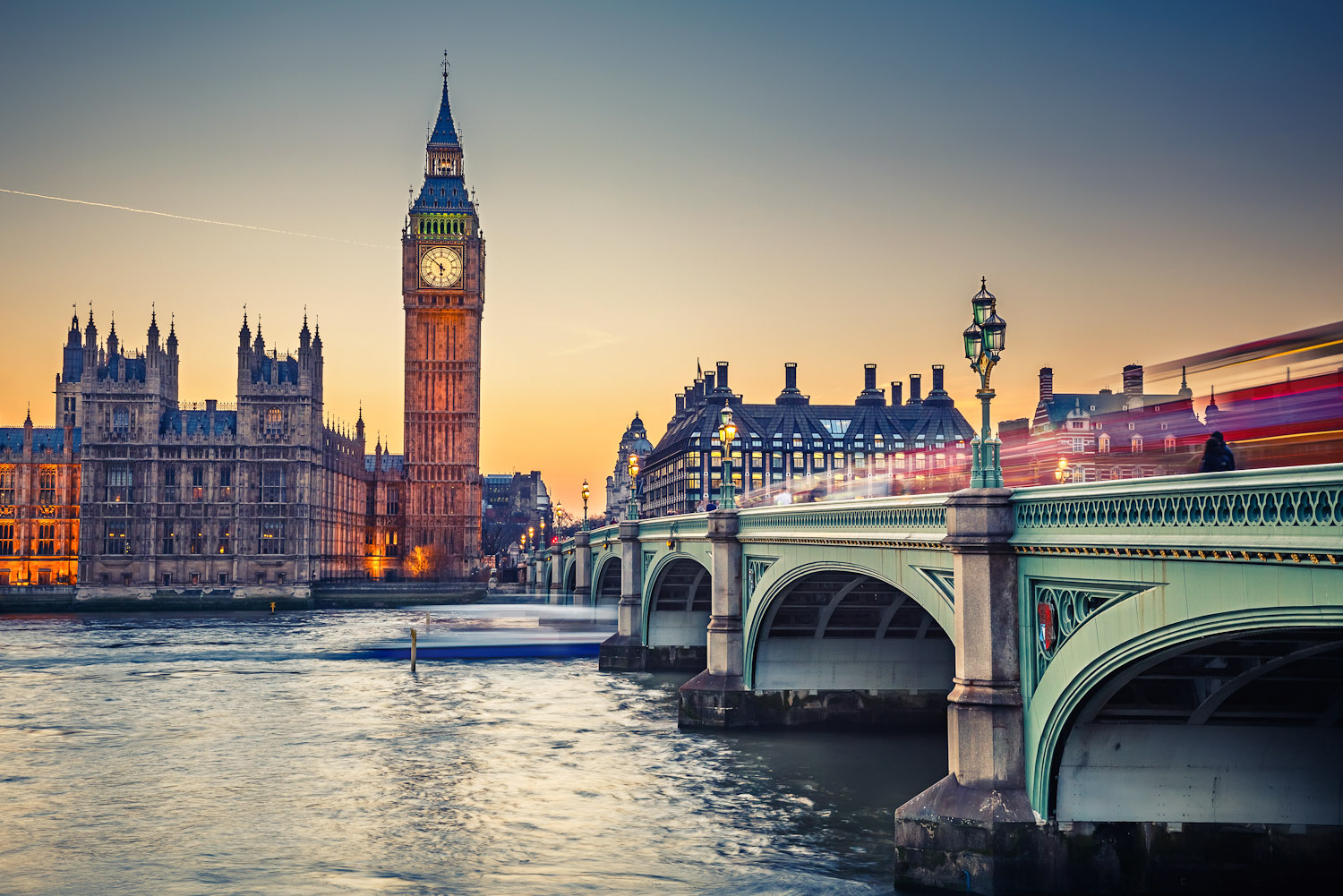Escape for the Weekend
Explore our collection of weekend



United Kingdom
What to see in Great Britain? the Lake District; St Paul’s Cathedral and the London Eye; Edinburgh Castle; the German High Seas Fleet wrecks; the Sound of Mull and the SS Chadwick wrecks; the Scilly Isles; North Wall in Ireland;
Individual Booking Try It FreeUnited Kingdom
Great Britain, officially the United Kingdom of Great Britain and Northern Ireland is situated on the British Isles. The capital of the United Kingdom is London, England.
The shores of the United Kingdom are washed by the Atlantic Ocean, the North Sea and the Irish Sea. The English Channel separates country from the continent.
Great Britain has a remarkable variety of landscapes. To the north and west there are highlands, to the east there are flat plains, and in the south there are lowlands with low ranges of hills.
Due to the Gulf Stream the climate of the UK is mild. It is not very cold in winter and not too hot in summer.
Tourist attractions of the UK -- the land of carefully held traditions and dense fogs can fit every taste.
You will undoubtedly like the stunning beauty of Durham Cathedral and Windsor Castle; stony laces of York Minster, one of the largest Gothic cathedrals in northern Europe; pastoral idyll of the Cotswolds; the Lake District – the largest National Park in the country – an ideal place for hiking and climbing; and, of course, London with its St Paul’s Cathedral, the Tower, the Big Ben, Buckingham Palace and the London Eye. Connoisseurs of spa procedures will be glad to visit hot springs of Bat, a famous British resort founded in 43 A.D. Its water is used in the treatment of rheumatic diseases, gout, and paralysis. Here you can also enjoy classical architecture, in particular, the Town Hall, the Market building and the Royal Crescent – a street of 30 same-style houses, located in the shape of a crescent.
In Canterbury there is an amazing Church of St. Martin, the oldest church in the UK, founded in the sixth century; the picturesque ruins of St Augustine's Abbey; and the world-known Canterbury Cathedral.
Nature enthusiasts will like Royal Botanic Gardens in Kew, founded in 1759 and displaying the world's largest collection of living plants - more than 30 thousands.
Very many tourists are attracted by Stonehenge, one of the most important prehistoric sites in the world, erected in the period between 3020-2100 BC.
On the border of two counties Wiltshire and Somersetshire there is Longleat manor built in the 16th century with the world's longest maze, which is made of 16 thousand yew bushes.
On the wild coast of the English Channel between Eastbourne and Seaford you will see marvelous snowy steep cliffs, called Seven Sisters. They create a truly fantastic landscape.
In Scotland you can visit a unique singing cave – Fingal's Cave. Its right hexagonal columns seem to be have created by a man, which caused many legends.
The national currency is the Pound. All major cards are widely accepted.
Airports
London Heathrow Airport (LHR)
Gatwick Airport (LGW)
Manchester Airport (MAN)
London Stansted Airport (STN)
Edinburgh Airport (EDI)
Diving in the United Kingdom
The UK's marine area is three times more than her land area and covers over 850 thousand square kilometers. Its coastline is more than 7,500 miles and has diverse marine environment with cold water reefs, cave systems, wall dives, drifts, gullies and shallow bays. There are about 8500 plant and animal marine species in the waters of the UK.
Diving in the sea is generally possible from April through to October. The visibility of water is up to 25 meters.
The amount of sunken ships near the UK coast (the estimate number of them is over a quarter of a million!) makes this country an ideal place for wreck diving.
In Scapa Flow, Orkney, Scotland, you can see the remains of the German High Seas Fleet, sunk in 1919 to prevent them being divided up amongst the allies. There are also many “blocking ships” sunk there during both world wars to prevent enemy’s access into the bay. Another interesting wreck – the Sound of Mull – is located near the west coast of Scotland. Near the Isle of Skye, Scotland, you can enjoy wreck, reef and wall diving. Marine fauna here includes plenty of fish, crabs and lobsters, and off the coast there is the wreck of the SS Chadwick, 1,463 ton British iron collier, sunk in 1892.
In Plymouth divers can explore the HMS Scylla, which was purposely sunk in 2004 to create an artificial reef.
Near the coast of the Western Rocks, the Scilly Isles divers can not only explore the wreck of 2600 ton Greek steamship Antonios, which sank in 1912, but also enjoy the beauty of the surrounding rocks.
Those who are fond of wall diving will enjoy North Wall, Rathlin Island, Northern Ireland. The depth varies from 20 to 200 meters and the visibility is up to 40 meters. The underwater world is stunning, but the currents can be fierce, so diving here is not for beginners.
The English Channel, whose average depth is around 40-60 meters, is also a good place for wreck diving: one of the best UK wreck dives, The Duke, a large, four-masted steamer that sank in 1889, is lying here; The Hood, Royal Sovereign Class battleship, can be an excellent first wreck dive as the depth is only 17 meters; another very popular wreck is The Kyarra, 6953 ton Australian steamer, sunk in 1918 by a torpedo.
